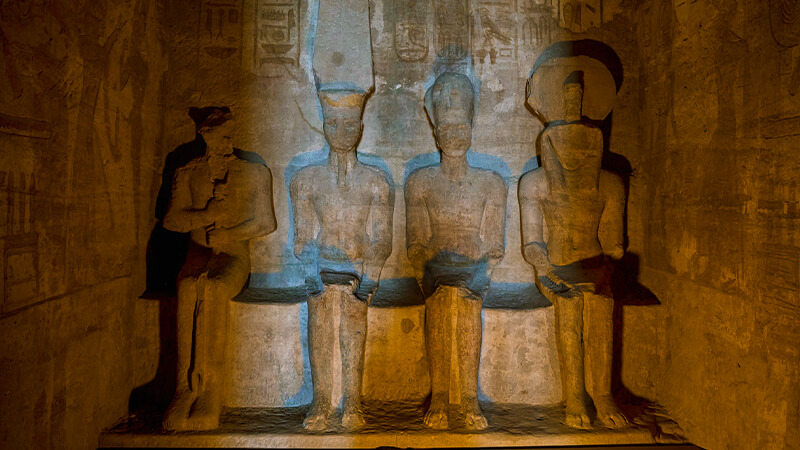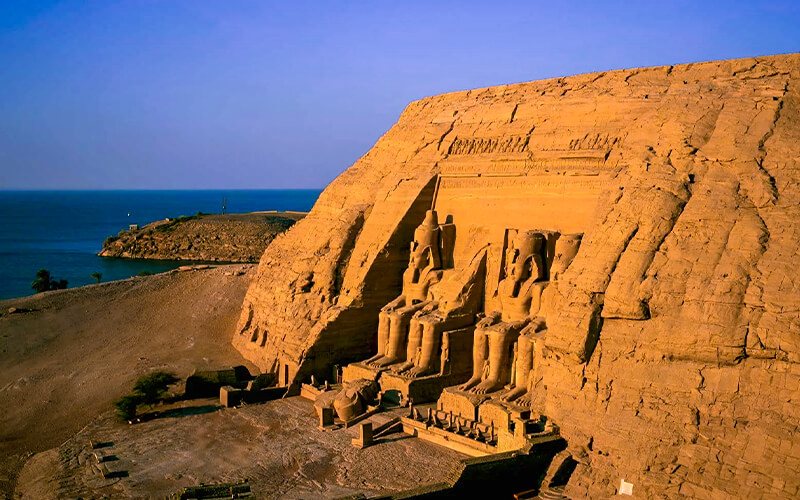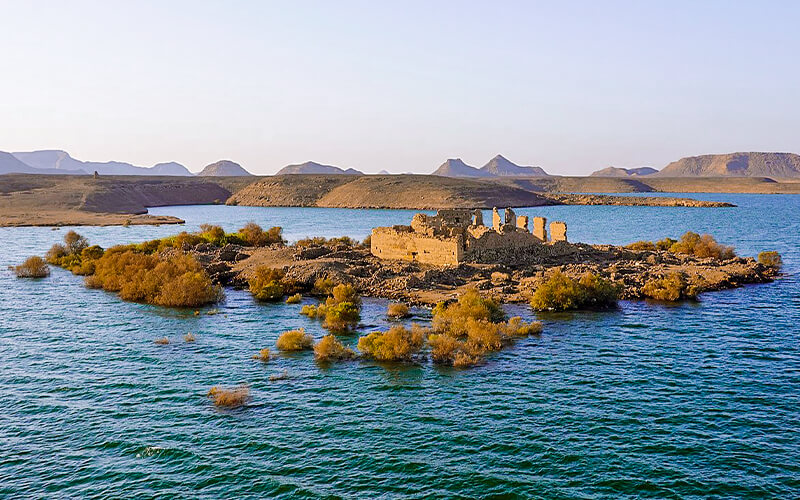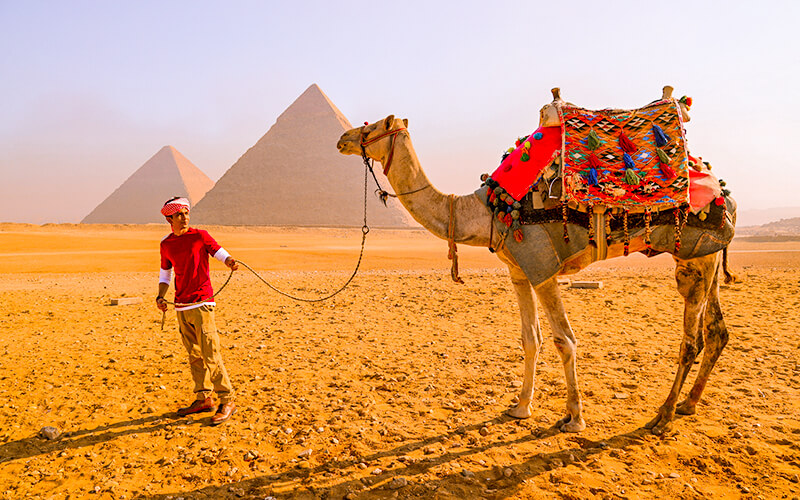Top 14 Facts about Abu Simbel Temple
Make some inquiries to discover Facts about Abu Simbel Temple. Two ancient Egyptian rock temples were built in the 1200s B.C. to commemorate King Ramses II’s reign. The name Abu Simbel stayed because a little boy named Abu Simbel was the first to peruse a display of the temples in 1813. The second-most popular tourist destination in Egypt is the Abu Simbel temple complex.
In the Nubian Village in southern Egypt, there are temples. They are 230 kilometers southwest of Aswan and close to the Sudanese border.
14 Interesting Facts about Abu Simbel Temple that you should know:

Abu Simbel Temples is surrounded by Lake Nasser
1- The great pharaoh Ramses II built a temple to remember his victory at the Battle of Kadesh (1274 BC). Ramses II’s most crucial battle against the Hittites was the Battle of Kadesh. It ended with a peace treaty, but Ramses II and the Hittite king celebrated their victories in their temples.
2- The Abu Simbel Temple is two separate temples, both of which are rock-cut buildings, and both of which were constructed during the reign of King Ramses II, somewhere around the year 1200 B.C. The first temple is devoted to King Ramses II, while the second temple is dedicated to his adored wife Queen Nefertari, who is buried in the first temple.
3- It took 20 years to build. It was built between 1284 and 1264 B.C. The temples were carved into the rock.
4- It has a 33-m-high and 38-m-wide front. Each of the four statues of Ramses II is about 20m tall and is sitting down.
5- There is no temple dedicated to any of King Ramses II’s other wives; only a temple dedicated to Queen Nefertari can be seen in Abu Simbel. The reason for this is that she was his first and primary wife, and he treasured her beyond all others. In this manner, many temples in ancient Egypt were constructed as a result of dedication.
6- The main temple was a place of worship for the gods Amun, Ra-Horajty, Ptah, and Ramses. The minor was only for Hator, who was represented by the figure of Nefertari.
7- In 1813, it was found again. Time covered the temples with sand, just like it did with so many other treasures in Egypt. In 1813, the Swiss explorer Johann Ludwig went there and told the Italian explorer Giovanni Belzoni about it. Who tried to get in 1813 but couldn’t? He finally got in in 1817 and stole all the treasures from the temple.

The sun’s rays enter the sanctuary in Abu Simbel Temple
8- In 1968, they moved. Because the Aswan High dam was being built, the temples of Abu Simbel were doomed to be covered by water. In 1959, a campaign was started to raise money from around the world to save the Nubian monuments. From 1964 to 1968, a large group of experts worked under the UNESCO banner to carefully move the temples that had been broken up into large blocks. The temples were taken apart, moved, and put together differently. Even though it seemed impossible, they were saved, and thousands of tourists visited them daily.
9- While a Lake Nasser tour includes a stop to see the temples, the lake itself was a potential danger to the destination at one point in time. Because of the building of the High Dam, the lake levels increased, and it was possible that the temples would come into direct contact with the water.
10- The two buildings of Abu Simbel Temple were cut into several parts in 1964, and both temples were relocated farther away from the rising waters of Lake Nasser as a result of this. They were relocated to a place 65 meters above the original site and two hundred meters farther away from the beach than they had been before.
11- In addition to its convenient location quite near the temple site, the Nefertari Hotel Abu Simbel is often regarded as the closest hotel to the temple site. Visitors who wish to tour the temple complexes won’t even need to rent a car, since the hotel is within walking distance of practically all of them.
12- The sculptures and artwork that adorn the two buildings of the Abu Simbel Temple are magnificent to see. Hand-carved pillars, murals, sculptures, statues, and much more enchant everyone who comes into contact with them. This piece of artwork is thousands of years old and very fragile. One of the reasons why cameras are not permitted is to avoid any inadvertent damage or fading from occurring.
13- In 1979, UNESCO put them on the World Heritage List as “Monuments of Nubia, from Abu Simbel to File.”
14- A unique phenomenon. The main temple was built so that on October 21 and February 21, the sun’s rays enter the sanctuary at the back of the temple and light up three of the four seated statues (Ptah, Amon, Ramses II, and Ra-Horajty), leaving the statue of Ptah, a god of the underworld, in the dark. These dates match Ramses II’s birthday, and the day he was crowned king.
The Abu Simbel temple is one of the most famous historical sites in the world, and many tourists dream of visiting it. If you want to see this magnificent monument and the other archaeological sites, you can check out our amazing Egypt Vacation packages and Nile cruises to find the best way to travel to Egypt for you.



